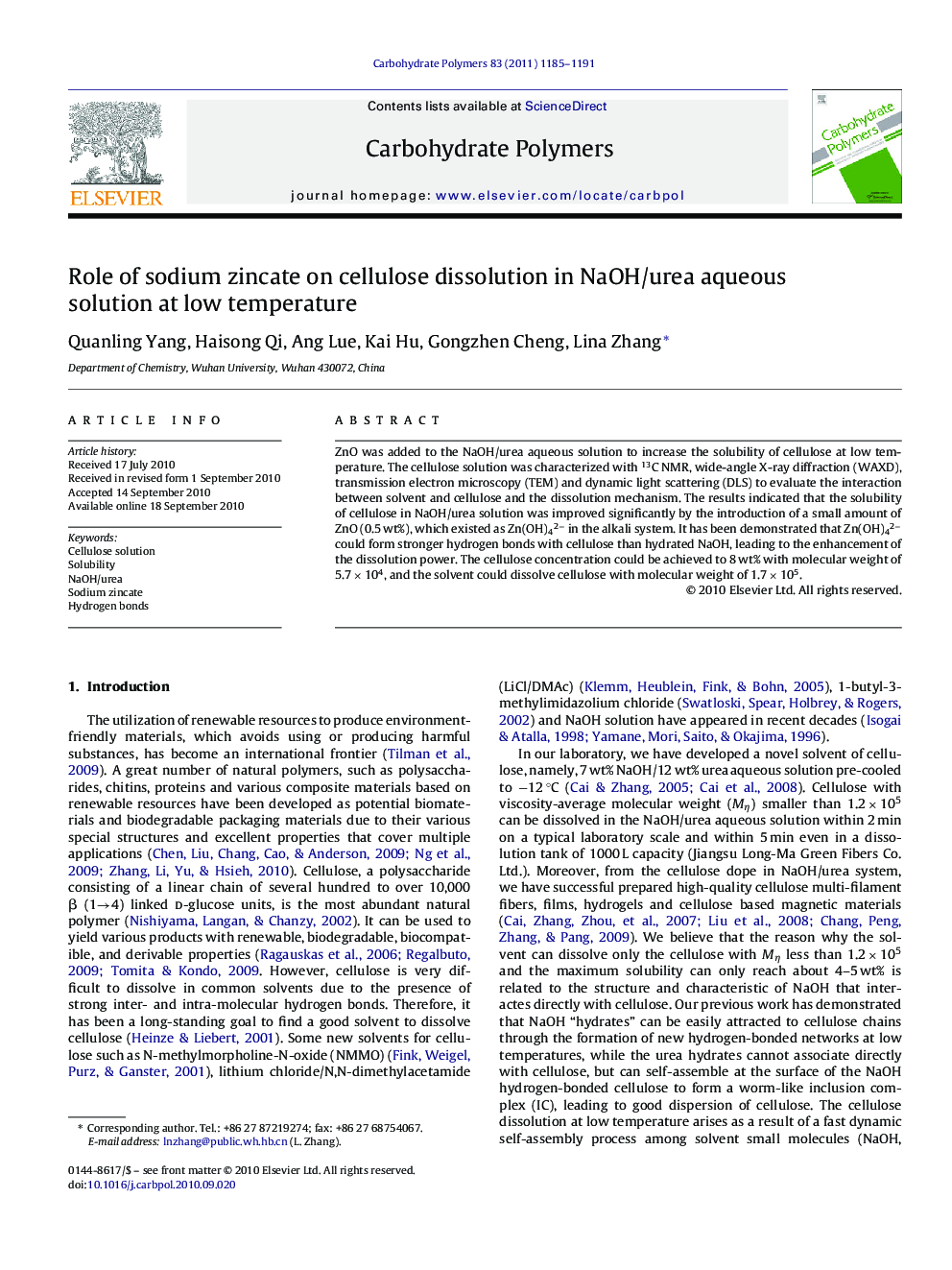| Article ID | Journal | Published Year | Pages | File Type |
|---|---|---|---|---|
| 1386900 | Carbohydrate Polymers | 2011 | 7 Pages |
ZnO was added to the NaOH/urea aqueous solution to increase the solubility of cellulose at low temperature. The cellulose solution was characterized with 13C NMR, wide-angle X-ray diffraction (WAXD), transmission electron microscopy (TEM) and dynamic light scattering (DLS) to evaluate the interaction between solvent and cellulose and the dissolution mechanism. The results indicated that the solubility of cellulose in NaOH/urea solution was improved significantly by the introduction of a small amount of ZnO (0.5 wt%), which existed as Zn(OH)42− in the alkali system. It has been demonstrated that Zn(OH)42− could form stronger hydrogen bonds with cellulose than hydrated NaOH, leading to the enhancement of the dissolution power. The cellulose concentration could be achieved to 8 wt% with molecular weight of 5.7 × 104, and the solvent could dissolve cellulose with molecular weight of 1.7 × 105.
